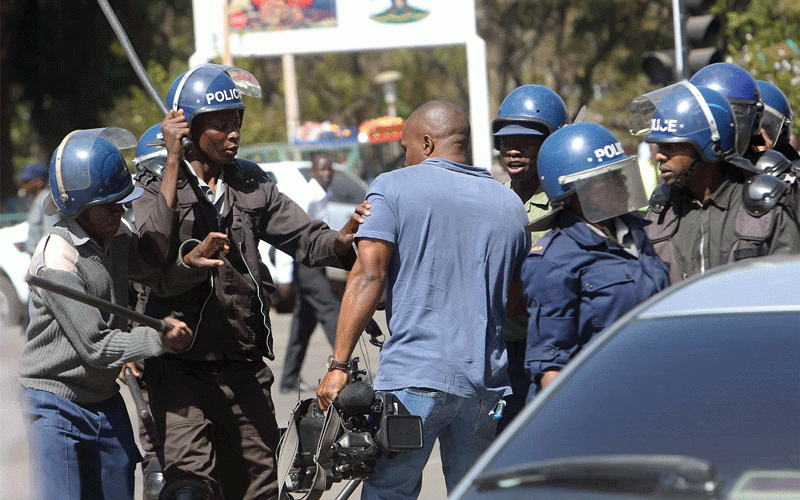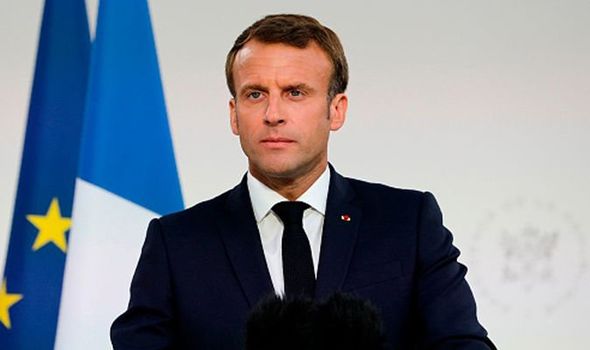
ZIMBABWEAN journalists are locked up in a spirited debate on the latest government proposals for co-regulation of the media — that is joint regulation by the statutory body Zimbabwe Media Commission (ZMC) and the media players themselves.
The major question in contention is whether the media should have one representative body or several bodies partnering the ZMC in the co-regulation framework.
The Media Alliance of Zimbabwe (MAZ) — a network including the Zimbabwe Union of Journalists (ZUJ), Zimbabwe National Editors’ Forum (Zinef), Gender and Media Connect (GMC), Media Monitors, Media Institute of Southern Africa (Misa-Zimbabwe), Voluntary Media Council of Zimbabwe (VMCZ) and the Zimbabwe Association of Community Radio Stations (Zacras) — is pushing for one professional representative body to administer one code of ethics alongside the ZMC. It believes opting for multiple bodies will fragment the media unnecessarily, fuelling polarisation and is not the best way of promoting professionalism.
Officials and journalists championing the creation of many professional associations see it as a fairer and more representative way of recognising, and securing the participation of the various elements of the Zimbabwe media in the new co-regulation system.
Where is the struggle today?
The Information, Media and Broadcasting Services ministry convened a workshop on August 11 and 12, 2022 in Kadoma which was attended by editors, journalists, media organisations, professional associations, academia, government officials, legislators and representatives of the ZMC.
The workshop discussed the ZMC Amendment Bill, which seeks to expand ZMC’s mandate to include functions that were in the now-defunct Access to Information and Protection of Privacy Act (AIPPA). These include the registration of mass media services, accreditation of journalists and administration of a media fund.
The contentious issue was the Media Practitioners Bill that seeks to provide parameters for media co-regulation through delegating the powers of ZMC to a professional body or bodies. There was heated debate with the ministry and ZMC insisting on delegation of regulatory powers to many media associations, while media representatives opted for one representative body that encompasses the said associations.
- Feature: Zim’s quest for media self-regulation
- Freedom of expression as a driver for other human rights
- Repeal repressive media laws: Misa
- Expose illicit financial flows, media urged
Keep Reading
The proposal was that each of the associations would be represented in the main body which they suggested could be termed Media Practitioners Council. Consensus was eventually reached on the position of the media stakeholders. The Information ministry was thus expected to derive principles of the Media Practitioners Bill from the unanimous position taken at the Kadoma write workshop.
Cabinet principles and MAZ response
In her post-Cabinet meeting briefing on December 13, Information minister Monica Mutsvangwa announced principles for the Media Practitioners Bill, which were at variance with the outcome of the Kadoma workshop. The Media Alliance of Zimbabwe (MAZ) response was: “The gazetted principles are flawed in that instead of driving the industry towards standardising the quality of journalism and professionalising the sector, the principles further polarise and divide the sector.”
From Rhodesia to Zimbabwe
Zimbabweans waged a protracted war of liberation to free themselves from the oppressive minority settler regime. One of the pillars of freedom sought was freedom of the media and access to information. During the struggle, the regime had continued to intensify restrictions on the media.
According to the Rhodesia Guild of Journalists, eighty journalists were expelled from Rhodesia between 1965 and 1979. The Rhodesia Herald often ran with some blank pages in protest over stringent media restrictions before a ban was imposed on the protests.
Following the attainment of independence in 1980, the new government was lethargic in its media law reform agenda and did not seem to have a clear direction on the route to follow on media regulation. The only law that was immediately repealed was the Powers, Privileges and Immunities of Parliament Act, which made it illegal for media to report on debates in Parliament.
Media regulation after 1980
In 1980 the media industry was lean and dominated by the public media, the Zimbabwe Broadcasting Corporation (ZBC) and Zimbabwe Newspapers 1980 Limited. Both had just been reconstituted.
In January 1981, the government set up the Zimbabwe Mass Media Trust (ZMMT) chaired by Davison Sadza. This was part of a new media policy under which ZMMT would serve as an authority to oversee the transition of the media from white minority control to an independent Zimbabwe. The government rhetoric then was that the media must be free, non-partisan, and mass-orientated and serve the national interests.
Then Information, Posts and Telecommunication minister the late Nathan Shamuyarira became the de facto media regulatory authority with the responsibility of issuing Press cards to journalists. The ministry had sweeping powers that included clearing both local and foreign journalists for interviews with public officials. The minister held regular briefings with editors updating them on programmes and policies. ZUJ, the only organisation that represented media workers, was still trying to find its feet as the new players were taking over from the Rhodesia Guild of Journalists.
1995 — Media Council of Zimbabwe
The first attempt towards establishment of a media self-regulatory body was in 1995 when the then editor-in-chief of Community Newspapers group Wilf Mbanga, representing the Willie Musarurwa Trust worked with the leadership of ZUJ to set up the Media Council of Zimbabwe (MCZ).
The ZUJ leadership got the greenlight for the project from the then Justice, Legal and Parliamentary Affairs minister Emmerson Mnangagwa (now the President of Zimbabwe) when he was a guest at a union meeting held in Harare. Joyce Mujuru, then Information, Posts and Telecommunications minster, subsequently approved the idea.
MCZ was chaired by the late retired Justice John Manyarara and the board included the director of information under the Information, Posts and Telecommunications ministry, Bornwell Chakaodza, ZUJ president Kindness Paradza (now Information, Media and Broadcasting Services deputy minister), ZUJ secretary-general Tapfuma Machakaire. Zimpapers and ZBC were represented by their corporate executives Lovejoy Charidza and Erica Ndewere. Other board members were Judith Todd (human rights activist), Welshman Ncube (UZ law lecturer), Lupie Mushayakarara (journalist), Geoff Feltoe (UZ law lecturer), Ozias Tungwarara (ZimRights), Priscilla Matshe (Nust information director), Wilf Mbanga (editor-in-chief Community Newspapers Group) and Andy Moyce (editor Parade magazine).
MCZ came up with the first draft code of ethics for media practitioners in Zimbabwe which was not finalised.
A committee led by Professor Feltoe, a law lecturer at the University of Zimbabwe, worked on a media law reform project and managed to present its recommendations to the government. No action was taken before MCZ folded in 1997 due to viability challenges.
2000 — Minister introduces stringent regulations
Media in Zimbabwe had its worst experience during the tenure of Jonathan Moyo as Information and Publicity minister in the President’s Office from year 2000. The minister became the regulating authority and would issue instructions to even junior reporters in newsrooms.
Moyo created polarisation in the media and blocked journalists from the private media from accessing information from government and quasi-government bodies. The period also saw the purging of hundreds of experienced journalists from the public media.
In 2002, AIPPA a repressive law that directly attacked the independence of the media was passed. The new law saw the creation of the infamous Media and Information Commission (MIC) led by Tafataona Mahoso. All its commissioners were appointed by government. MIC was responsible for accrediting journalists and to register and deregister mass media service providers.
New players introduced by the Associated Newspapers Group in 1999, the Daily News and Daily News on Sunday, were shut down on September 12, 2003. More publications, including The Tribute which was run by Kindness Paradza soon faced a similar predicament. Hundreds of journalists lost employment while others were arrested and detained.
AIPPA gave the police powers to arrest and detain journalists under sections that criminalise the publication of falsehoods. Efforts to revive the media council around 2001 were thwarted by the minister at a stakeholders meeting organised by Mbanga in Nyanga.
2007 — Voluntary Media Council of Zimbabwe
In 2007, ZUJ and Misa revived efforts to set up another self-regulating body. The exercise saw then ZUJ president Matthew Takaona and Misa-Zimbabwe programmes officer Nyasha Nyakunu traverse the country on an outreach programme where they consulted media practitioners, the public and civic society.
Misa-Zimbabwe is one of 11 chapters of the Media Institute of Southern Africa. It promotes and defends media freedom and freedom of expression.
Its membership comprises journalists and other media professionals including media houses, online content creators, freedom of expression activists, bloggers and media students.
The efforts culminated in the establishment of the Voluntary Media Council of Zimbabwe (VMCZ) whose board consists of media representatives and representatives of the public.
The council produced a code of conduct for media practitioners in Zimbabwe which is recognised by all media players. VMCZ runs a viable a complaints scheme which has received complaints from the public and from senior government officials and parliamentarians. VMCZ is thus a voluntary media self-regulatory body that has earned the respect of most media houses, including public media.
2009 — Inclusive government reviews media regulation
Following the disputed results of the 2008 presidential elections, political parties went into negotiations mediated by then South African President Thabo Mbeki. This culminated in the signing of Global Political Agreement (GPA) on September 15, 2008. Article 19 of the GPA dealt with freedoms of expression and communication.
Chapter XB Part III provided for the establishment of the ZMC which replaced MIC. The commission chaired by the late veteran broadcaster Godfrey Majonga went into office in February 2010.
Functions of ZMC as a statutory body are to uphold, promote and develop freedom of the media, to promote and enforce good practices and ethics in the media and to promote fair competition and diversity in the media.
2012 – Media Alliance of Zimbabwe
In 2012, media organisations that include the Media Monitoring Project Zimbabwe, Media Institute of Southern Africa (Zimbabwe chapter), ZUJ, Zinef, Gender and Media Connect, the Media Centre, ZACRAS, the VMCZ and the African Community Publishing Development Trust formed the Media Alliance of Zimbabwe (MAZ).
MAZ is tasked with focusing on media policy and legislative review in line with the new Constitution, promotion of media plurality and diversity, strengthening professionalism and ethics in the media, creation of safe, equitable and enabling working conditions in the media sector. MAZ has consistently stood with its position on the need for self-regulation as the best practice.
2013 — Constitution and media regulation
In 2010 when the Zimbabwean government embarked on an outreach programme towards the drafting of a new Constitution, media players and civic society lobbied for explicit clauses on media freedom and access to information. The provisions would be a springboard towards a progressive regulatory framework for the media.
As a result, section 61 of the 2013 Constitution guarantees freedom of expression, including media freedom and academic freedom. Section 62 guarantees citizens the right of access to information held by public bodies. ZMC is among the Chapter 12 independent commissions that were established under the Constitution.
Aligning media laws to the Constitution
The two pieces of legislation that have a direct bearing on media regulation are the Zimbabwe Media Commission Act and the proposed Media Practitioners Bill. The ZMC Act was gazetted on April 2, 2021. The Media Practitioners Bill is still pending.











